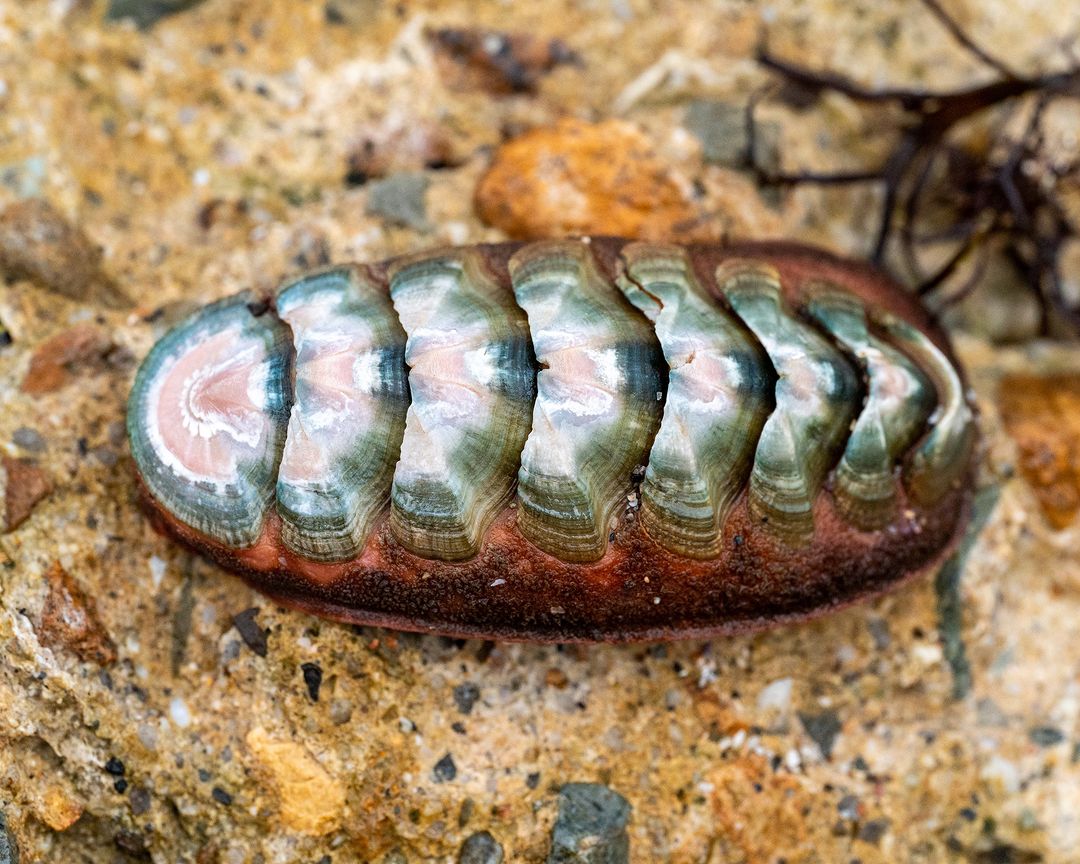Summary:
Chitons are dragon-scale-like creatures that belong to the mollusk family.
They can be found in tidepools attached to rocks near the surf.
Chitons have a remarkable fossil record dating back 400 million years.
They come in various colors and have different shell characteristics.
Chitons have fascinating locomotion and feeding methods.
Have you ever encountered a creature that looks like it belongs in a fantasy world? Let me introduce you to the Chiton, a dragon-scale-like creature that calls the ocean home. This fascinating creature is a type of mollusk, and its unique appearance and characteristics make it a true wonder of nature.
If you ever explore tidepools, look at the rocks near the surf. You might just come across a Chiton clinging to the surface, its shell gleaming under the sunlight. These amazing creatures have been around for a remarkably long time, with a fossil record dating back an astonishing 400 million years! They have truly stood the test of time.
One of the most intriguing aspects of Chitons is their incredible diversity. Chitons come in various shapes and sizes, from the tiny inch-long species to the foot-long giants. Not only that, but they also exhibit a range of stunning colors. You might stumble upon Chitons in shades of black, red, pink, and even blue! The variety doesn’t end there; their shells can be smooth, shiny, dull, hairy, scaly, or even spiny, depending on the species. It’s like nature’s very own artist’s palette.
Now that we’ve admired their exquisite appearance, let’s delve into Chiton locomotion. How do these creatures move, you might ask? Well, their method of transportation is fascinatingly unique. Chitons use a specialized muscular foot to glide across surfaces, leaving visible tracks behind. They easily navigate rocks and other substrates, their dragon scale-like armor protecting them from harm. It’s like watching a miniature armored dragon strolling through the tidepools!
While locomotion is a mesmerizing aspect of Chitons, their feeding habits are equally captivating. These mollusks are herbivores and primarily feed on algae and other organic material found on rocks. With a specialized radula, a toothed organ specifically adapted for scraping, they use their powerful tongue-like structure to remove their food from the substrate. It’s a unique and efficient way to extract nutrients from their surroundings, ensuring survival in the ever-changing marine environment.
As we marvel at the beauty and functionality of Chitons, it’s important to recognize their ecological role as well. These mollusks play a vital part in maintaining the balance of their habitat. By grazing on algae, they prevent excessive growth, which could otherwise harm the delicate ecosystems of tidepools. They are nature’s cleanup crew, ensuring a healthy and thriving environment for other marine organisms.
It’s truly awe-inspiring to witness the wonders of nature, and Chitons are a perfect example of the unique creatures that inhabit our world. Their dragon scale-like appearance, remarkable fossil record, diverse colors and shell characteristics, fascinating locomotion, and essential ecological role make them a truly captivating species.
Next time you find yourself by the ocean, take a moment to explore the tidepools and see if you can spot a Chiton. It might just be clinging to a rock, showcasing its stunning shell and carrying on with its fascinating life. Remember, nature never ceases to surprise us with its extraordinary creations, and Chitons are a true testament to the remarkable diversity and beauty found in the depths of our oceans.
*****
Source Description
This dragon-scale-looking creature is called a Chiton, a kind of mollusk. You can often find them in the tidepools attached to the rocks near the surf. Chitons have a relatively good fossil record, stretching back 400 million years! Chitons can be less than an inch long or up to a foot long. They come in many colors: black, red, pink, and blue. Depending on the species, the shell might be shiny, dull, smooth, hairy, scaly, or spiny.


